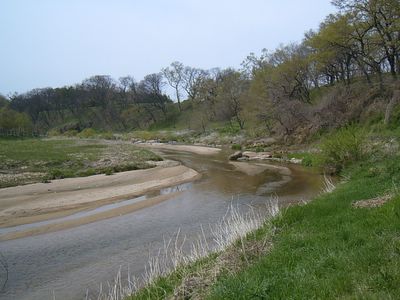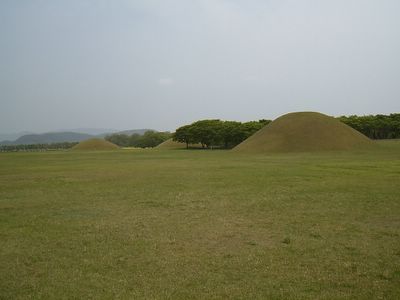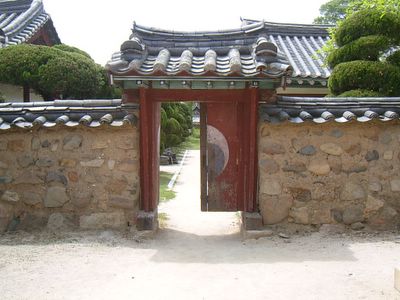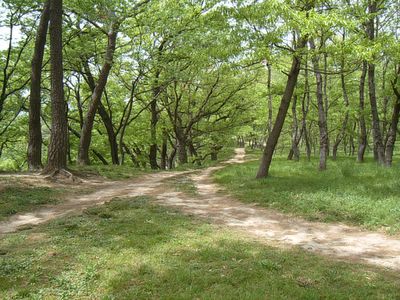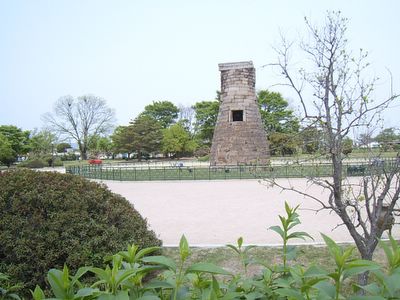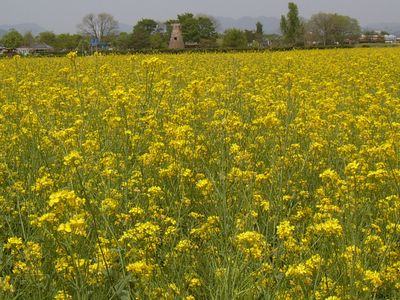Gyeongju 경주 lies about 70 km east of Gyeongsan. It was the capital of the Silla Kingdom for 992 years(B.C 57 - A.D 935). Gyeongju Historic Areas contain a variety of outstanding examples of Korean Buddhist art, in the form of sculptures, reliefs, pagodas, and the remains of temples and palaces, so it is often called an open-air museum.
In the middle of Gyeongju, just outside the downtown area, is Banwolseong(반월성, half moon palace) site, upon a crescent shaped hill; it is one of Silla's palace ruins. To the south Namcheon(남천, the south stream) forms a natural defense.
The tombs near the center of Gyeongju, about 70 km east of Gyeongsan were constructed during the early stages of Silla dynasty and have yielded many treasures, including a gold crown.
Gate of traditional Korean house. People walk along the same path.
Down from Banwolseong in Gyeongju, Cheomseongdae Observatory built in the middle of the 7th century is located. The observatory consists of 362 granite stones. A rapeseed field between Banwolseong and Cheomseongdae.
